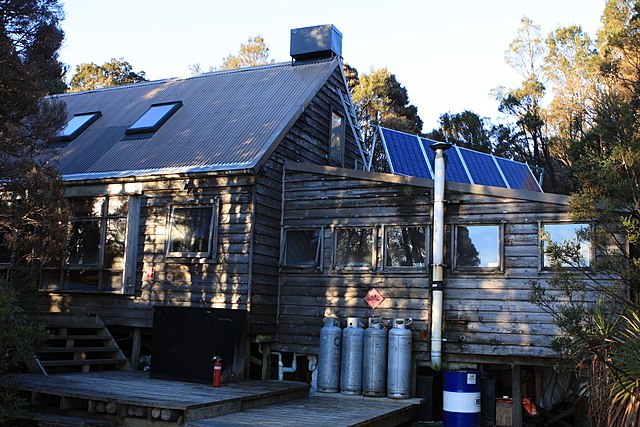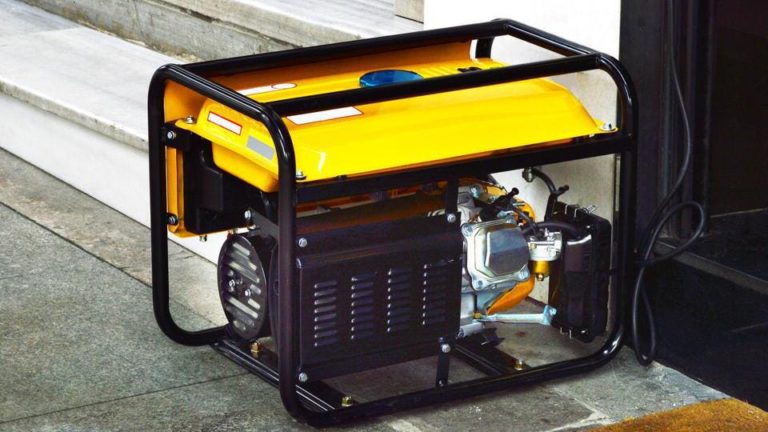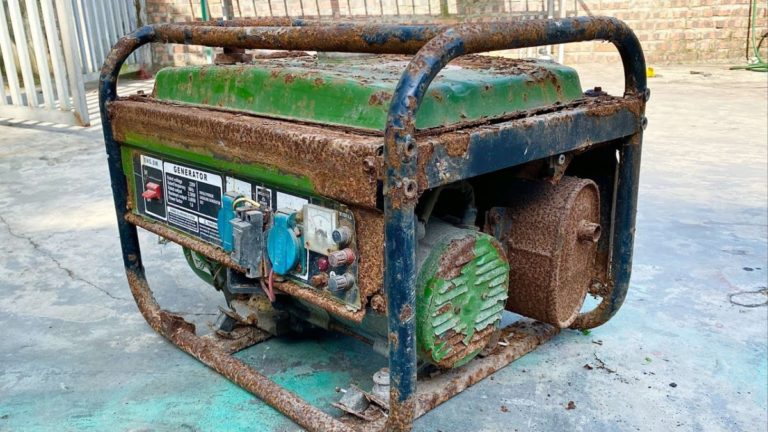Are you tired of relying on the grid for your energy needs?
Do you dream of living off the grid and being self-sufficient?
With the right technology and know-how, it’s possible to break free from the shackles of traditional energy sources and embrace a more sustainable and independent lifestyle.
We’ll explore some innovative off-grid energy solutions that can help you achieve your self-sufficient dreams.
From solar panels and wind turbines to hydroelectric power and biogas systems, we’ll delve into the latest technologies and techniques for harnessing renewable energy sources.
Whether you’re a seasoned off-grid enthusiast or just starting out on your journey towards self-sufficiency, this post is designed to provide actionable information and inspiration for your next steps.
So, let’s get started!
Harnessing Solar Power
Install high-efficiency solar panels to generate electricity and reduce your reliance on the grid. Consider using a solar tracking system to maximize energy production.
High-efficiency solar panels are now more affordable and accessible than ever before, making it easier than ever to install these systems and start reaping the benefits.
One of the key benefits of harnessing solar power is the ability to generate electricity on-site, which can help to reduce your monthly energy bills and mitigate the impact of rising energy costs.
Using a solar tracking system can help to maximize energy production and ensure that your solar panels are operating at peak efficiency.
This means that you can generate more electricity from the same amount of sunlight, further reducing your reliance on the grid and lowering your carbon footprint.
Off the grid energy solutions, like solar power, offer a unique opportunity to disconnect from the grid and take control of your energy consumption.
By installing a high-efficiency solar panel system, you can generate all the electricity you need to power your home or business, completely independent of the grid.
This not only saves you money on energy bills, but it also allows you to reduce your carbon footprint and contribute to a more sustainable future.
With the right off the grid energy solutions, you can live comfortably and sustainably, without sacrificing the modern conveniences that we all rely on.
Utilizing Wind Energy
Invest in a wind turbine to harness the power of wind and generate electricity. Choose a turbine that is suitable for your location and energy needs.
Utilizing wind energy is a fantastic way to reduce your reliance on the grid and power your home or business with clean, renewable energy.
Investing in a wind turbine can provide a reliable source of electricity, regardless of the weather conditions.
When choosing a wind turbine, it’s essential to consider your location and energy needs to ensure you select the right size and type of turbine for your situation.
For instance, if you live in an area with consistent wind speeds, a larger turbine may be more appropriate, while a smaller turbine might be better suited for areas with less consistent winds.
It’s important to ensure that the turbine is installed correctly and maintained regularly to ensure optimal performance and safety.
Off-grid energy systems that incorporate wind power can provide a reliable and sustainable source of electricity, helping you minimize your carbon footprint and reduce your reliance on the grid.
With proper maintenance and care, a wind turbine can last for decades and provide a significant portion of your energy needs, making it a worthwhile investment for anyone looking to go off the grid.
Hydroelectric Power
If you have a stream or river nearby, consider investing in a small-scale hydroelectric system to generate electricity. This can be a reliable and sustainable source of energy.
Hydroelectric power is a renewable energy source that harnesses the power of moving water to generate electricity.
If you have a stream or river nearby, you may be able to install a small-scale hydroelectric system to meet your energy needs.
In addition, hydroelectric power is a sustainable source of energy, as it does not produce any greenhouse gas emissions or other pollutants.
By investing in a small-scale hydroelectric system, you can reduce your reliance on the grid and enjoy a stable source of clean energy.
Plus, with the right equipment and installation, you can even use the power of the sun and wind to supplement your hydroelectric energy and become even more off the grid!
This means that you’ll need to have a steady stream or river nearby to power your system.
However, with the right location and equipment, a small-scale hydroelectric system can provide a significant portion of your energy needs.
Plus, if you live in an area with a high water table or underground stream, you may be able to use a water wheel or other underground water sources to generate energy.
Overall, hydroelectric power offers a clean, reliable, and sustainable source of energy that can help you reduce your reliance on the grid and enjoy a more off-grid lifestyle.
Biomass Energy
Use biomass sources like wood chips, agricultural waste, or even food waste to generate electricity through a biomass generator or burner. This can be a cost-effective and renewable energy solution.
Biomass Energy: A Cost-Effective and Renewable Energy Solution
Biomass energy is a versatile and sustainable source of power that can be generated from various organic materials such as wood chips, agricultural waste, and even food waste.
This renewable energy solution can be achieved through a biomass generator or burner, which converts the biomass into heat or electricity.
One of the key advantages of biomass energy is its cost-effectiveness.
Unlike fossil fuels, which are finite and subject to price fluctuations, biomass is an abundant resource that can be sourced locally, reducing transportation costs and dependence on foreign fuel sources.
The use of biomass for energy generation can help reduce greenhouse gas emissions and reliance on non-renewable energy sources, making it a more sustainable option.
To implement biomass energy, a biomass generator or burner is required.
These systems can be designed to fit specific energy needs and can be fueled by various types of biomass materials.
For instance, agricultural waste such as crop residues, animal manure, and food waste can be used as fuel.
Wood chips and other plant-based materials can also be employed as energy sources.
The biomass is burned or converted into gas, which is then used to generate electricity or heat.
Off-the-grid energy systems that utilize biomass energy can be particularly beneficial for remote or isolated communities that may not have access to traditional energy sources.
These systems can provide a reliable and sustainable source of power, helping to meet energy needs and reduce dependence on non-renewable energy sources.
Moreover, biomass energy can be a valuable tool for reducing waste and promoting sustainable agriculture and forestry practices.
Biomass energy is a versatile and renewable source of power that can be harnessed for off-the-grid energy systems.
By leveraging biomass sources such as wood chips, agricultural waste, or even food waste, communities can generate electricity through biomass generators or burners.
These systems can be customized to meet specific energy needs and can be fueled by a variety of biomass materials, including crop residues, animal manure, and food waste.
The biomass is converted into gas or burned to produce electricity or heat, providing a reliable and sustainable source of power for remote or isolated communities.
One of the key benefits of biomass energy is its potential to create a more circular economy.
By using waste materials as energy sources, farmers and foresters can turn waste into wealth, creating a more sustainable and resilient local economy.
Biomass energy systems can be integrated with other renewable energy sources, such as solar and wind power, to create a hybrid energy system that is both reliable and cost-effective.
This can be particularly beneficial for communities that are not connected to the grid or have limited access to other energy sources.
Moreover, biomass energy systems can be designed to be scalable, making them suitable for a wide range of applications, from small-scale community energy projects to large-scale industrial operations.
This flexibility makes biomass energy a promising solution for communities looking to transition to a more sustainable and independent energy system.
Overall, the use of biomass energy offers a wealth of benefits for off-the-grid energy, including increased energy independence, reduced carbon footprint, and a more resilient local economy.>
Off the grid energy is an increasingly popular topic as people seek sustainable and independent energy solutions.
One such solution is biomass energy, which harnesses the power of organic matter to generate electricity.
Biomass energy systems can use a variety of organic materials, including wood chips, agricultural waste, and even food waste, to generate electricity through a biomass generator or burner.
One of the key benefits of biomass energy is its potential to create a more circular economy.
By using waste materials as energy sources, farmers and foresters can turn waste into wealth, creating a more sustainable and resilient local economy.
Biomass energy systems can be integrated with other renewable energy sources, such as solar and wind power, to create a hybrid energy system that is both reliable and cost-effective.
With the right policy frameworks in place, biomass energy can also help to reduce greenhouse gas emissions and mitigate the impacts of climate change.
As a result, biomass energy systems are becoming increasingly popular among those seeking off the grid energy solutions.>
Biomass energy is a sustainable and renewable source of electricity that harnesses the power of organic matter to generate energy.
Biomass energy systems can utilize a variety of organic materials as fuel sources, including wood chips, agricultural waste, and even food waste.
These materials are burned or converted into electricity using a biomass generator or burner, which can be integrated with other renewable energy sources, such as solar and wind power, to create a hybrid energy system.
This approach can provide several benefits for communities and individuals seeking off the grid energy solutions.
Biomass energy can reduce greenhouse gas emissions and mitigate the impacts of climate change.
The combustion of biomass materials releases carbon dioxide, but this is carbon dioxide that would already be present in the atmosphere, as opposed to the fossil fuels that release carbon dioxide that has been locked underground for millions of years.
By using biomass energy, we can reduce our reliance on fossil fuels and decrease our carbon footprint.
Biomass energy systems can provide a reliable source of electricity for off the grid energy solutions.
Unlike solar and wind power, which can be intermittent and dependent on weather conditions, biomass energy can be generated continuously, providing a stable source of power for homes, businesses, and communities.
This can be particularly useful for remote locations where traditional grid power may not be available or where renewable energy solutions may not be feasible.
Biomass energy systems can be combined with other renewable energy sources, such as solar and wind power, to create a hybrid renewable energy system.
This can be particularly effective for providing off the grid energy solutions as it can harness multiple sources of energy to provide a reliable and consistent source of power.
It’s important to note that while biomass energy has many advantages, it’s not without its own set of challenges and limitations.
For example, the cost of biomass energy systems can be high, and the production of biomass materials may require significant amounts of land, water, and nutrients.
The combustion of biomass materials can produce harmful emissions, such as particulate matter and nitroxides, which can be harmful to human health and the environment.
As such, it’s important to carefully consider the pros and cons of biomass energy and to develop solutions that are sustainable, environmentally friendly, and socially responsible.
Geothermal Energy
If you live in an area with suitable geology, consider investing in a geothermal system to harness the heat from the earth to generate electricity. This can be a reliable and clean source of energy.
Geothermal energy is a highly efficient and reliable source of clean power that can be harnessed if you live in an area with suitable geology.
By installing a geothermal system, you can tap into the natural heat of the earth to generate electricity.
This system works by circulating water or steam through a network of pipes called a loop that is buried underground.
The fluid absorbs heat from the earth and carries it to a heat exchanger, where it is transferred to a coolant that produces steam to power a turbine.
The steam then spins a generator to produce electricity.
Geothermal energy is a particularly appealing option for off-grid energy solutions because it offers a consistent and renewable source of power, reducing reliance on fossil fuels and lowering carbon emissions.
The geothermal system can also provide heating and cooling for your home or business, making it a versatile investment for your energy needs.
Off the grid, geothermal energy can be paired with battery storage solutions to provide a reliable and consistent source of power, even during periods of extended grid outages.
By taking advantage of this clean and reliable energy source, you can not only reduce your carbon footprint but also enjoy long-term cost savings and energy independence.
Tapping into Water Energy
Install a small-scale hydroelectric system or a tidal power turbine to generate electricity from the movement of water. This can be a reliable and sustainable source of energy.
Tapping into water energy is a unique and innovative way to generate electricity, especially for those living near a river, stream, or ocean.
Installing a small-scale hydroelectric system or a tidal power turbine can harness the power of moving water to produce clean and renewable energy.
These systems can be installed in a variety of locations, including within rivers, streams, or directly in the ocean.
Off the grid energy systems that utilize water energy can be particularly reliable and sustainable, as they are able to generate power 24/7, without any interruptions.
Tidal power turbines can be placed in areas with high tidal ranges, which can provide a consistent source of energy.
This makes water energy systems an excellent option for those looking to reduce their reliance on the grid and transition to a more sustainable and self-sufficient energy source.
To install a water energy system, it is important to first assess the available resources, including the water flow and tidal range.
Once this information is gathered, a system can be designed and installed that is tailored to the specific needs of the location.
This may include selecting the appropriate turbine or generator, as well as determining the best location for the system.
With proper maintenance and care, a water energy system can provide a reliable and sustainable source of energy for many years to come.
Incorporating Passive Solar Design
Design your home or building to incorporate passive solar principles, such as large south-facing windows, to maximize natural light and heat. This can reduce your reliance on artificial lighting and heating.
Incorporating passive solar design into your home or building can significantly reduce your reliance on artificial lighting and heating.
By strategically positioning large south-facing windows, you can harness natural light and heat, creating a warm and inviting space without the need for expensive HVAC systems.
This design approach takes advantage of the sun’s natural position in the sky, using it to warm and illuminate your home.
Not only does this reduce your energy costs, but it also promotes a healthy and comfortable living environment.
Incorporating passive solar design can increase the value of your property, making it more appealing to potential buyers or renters.
Off the grid energy systems, such as solar panels and wind turbines, can further enhance the passive solar design by providing a reliable and sustainable source of energy.
By investing in passive solar design and off the grid energy systems, you can not only save money on your energy bills, but you can also contribute to a more sustainable future.
Utilizing Energy Storage Systems
Invest in energy storage systems like batteries to store excess energy generated from your off-grid energy solutions. This can help you rely less on the grid and reduce your energy costs. Consider using a smart energy management system to optimize energy usage and minimize waste.
As you explore off-grid energy solutions, investing in energy storage systems like batteries can help you store excess energy generated from your alternative energy sources, such as solar or wind power.
This enables you to rely less on the grid and reduce your energy costs.
Consider implementing a smart energy management system to optimize energy usage and minimize waste.
With a smart energy management system, you can monitor and control your energy usage in real-time, ensuring that you are using energy efficiently and effectively.
By leveraging energy storage systems and smart energy management, you can achieve a higher level of energy independence and reduce your reliance on the grid.
This can help you save money on your energy bills, while also contributing to a more sustainable future.
In fact, according to the United States Energy Storage Association, the cost of energy storage is expected to continue to decline in the coming years, making it increasingly accessible and affordable for homeowners and businesses.
Moreover, energy storage systems like batteries can provide backup power during power outages, ensuring that your home or business remains operational even when the grid goes down.
This can be especially important for critical facilities like hospitals, data centers, and emergency services.
With the cost of energy storage expected to decline, now is an excellent time to explore this option for your off-grid energy solutions.
Want More? Dive Deeper Here!
Hey there! If you’re the type who loves going down the rabbit hole of information (like we do), you’re in the right spot. We’ve pulled together some cool reads and resources that dive a bit deeper into the stuff we chat about on our site. Whether you’re just killing time or super into the topic, these picks might just be what you’re looking for. Happy reading!






